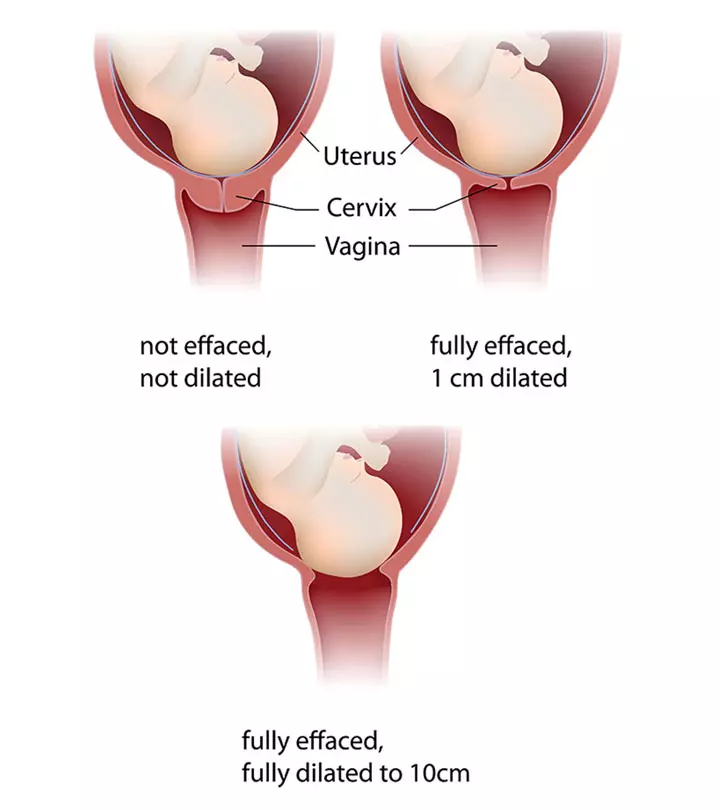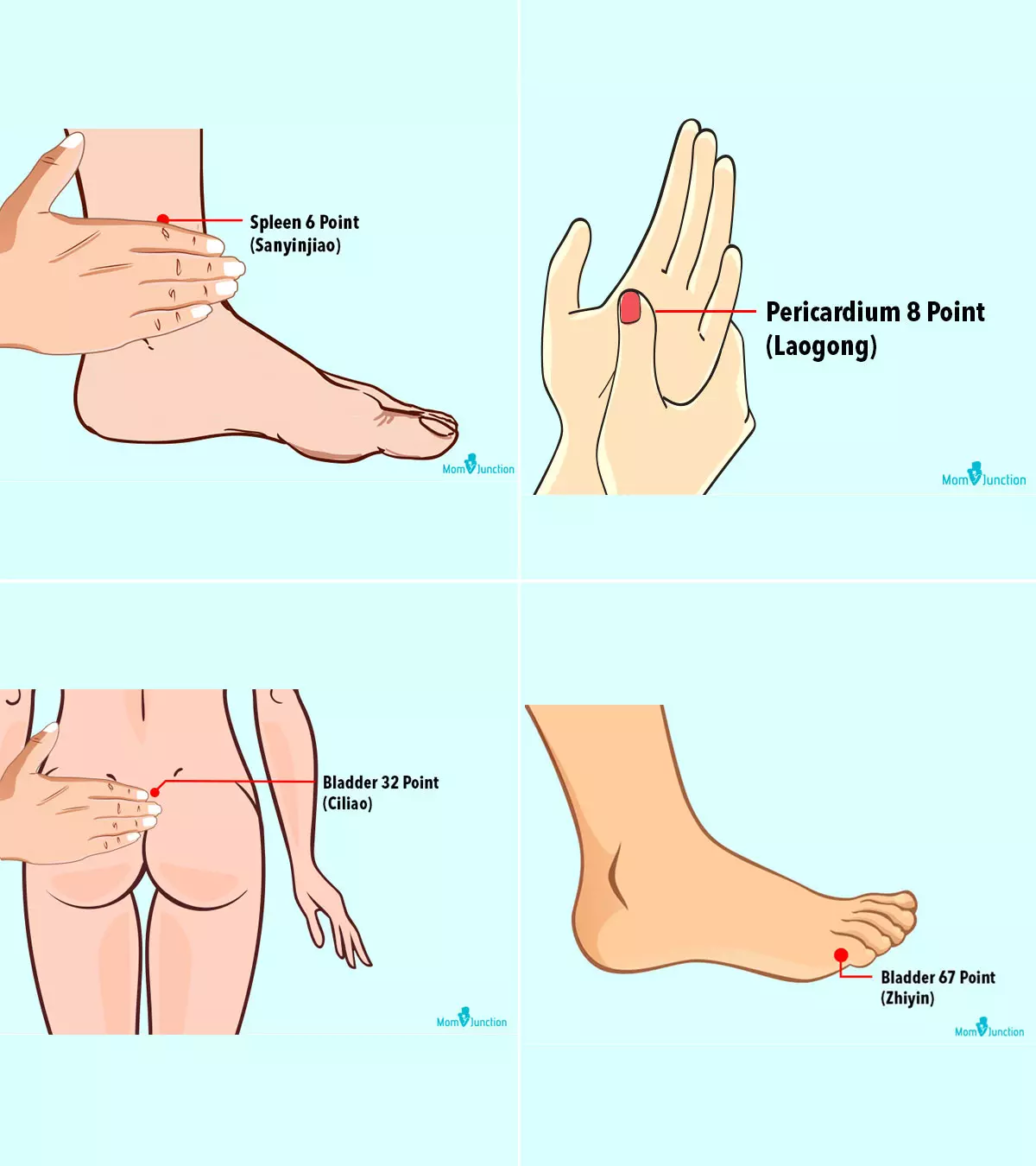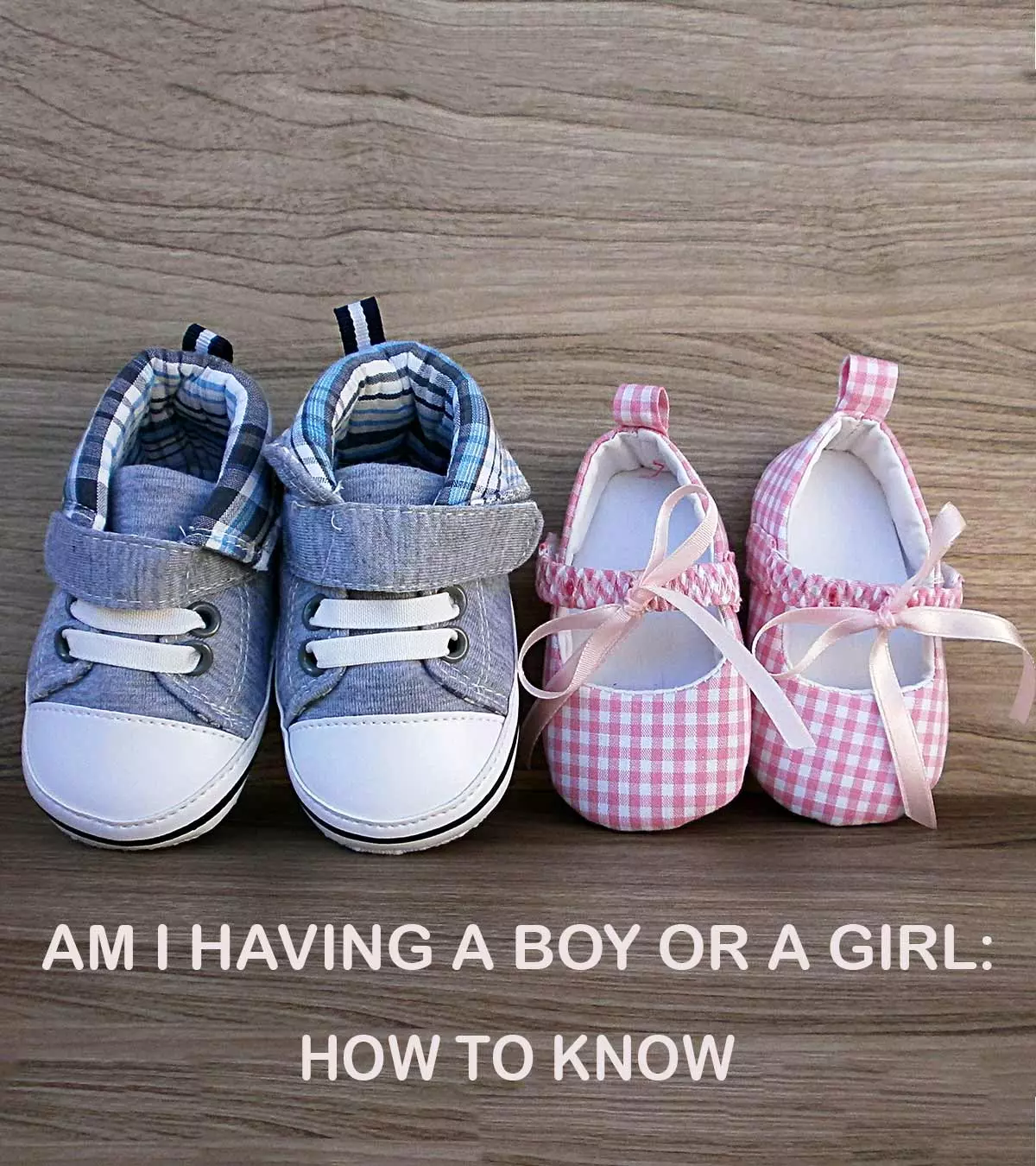
“Am I Having A Boy Or A Girl?”
The day you find out about your pregnancy, you may keep thinking of ways to determine the gender of the baby. With various old wives’ tales and scientific ways to predict baby gender, many expectant parents would want to try these methods to find out if they are going to welcome a little prince or princess. However, you must note that these tests may not be authentic and medically reliable. Also, if you plan to go for scientific methods, you must know if finding out a baby’s gender is legal in your country. Browse through this post to discover some scientific, not-so-scientific, and fun ways to detect the gender of your unborn baby.
Key Pointers
- Scientific methods to determine fetal gender include cell-free DNA test, amniocentesis, chorionic villus sampling (CVS), and ultrasound scan.
- The Ramzi theory, the skull gender test theory, and the Nub theory are gender-prediction techniques that have a partial reliance on science but may not always be reliable.
- Some fun gender-prediction techniques lack a scientific basis, such as the Chinese gender prediction chart, the wedding ring test, and the baking soda gender test theory.
Scientific Ways To Predict The Sex Of A Baby
Gateway Genomics conducted an online survey to evaluate the benefits of early fetal sex determination. According to the survey results, the mothers identified shopping for the newborn (80.8%) and selecting a name for the baby (80.5%) as the most significant advantages of early sex determination. The graphical representation below shares more reasons mothers felt early sex determination is beneficial.

Possible benefits of early fetal sex determination
Source: Reported benefits of early fetal sex determination; Gateway GenomicsSince several mothers consider early fetal gender determination useful, we brought you a list of standard medical ways to determine the sex of your unborn baby. However, they can be considered if sex determination is legal in your country.
1. Ultrasound scan
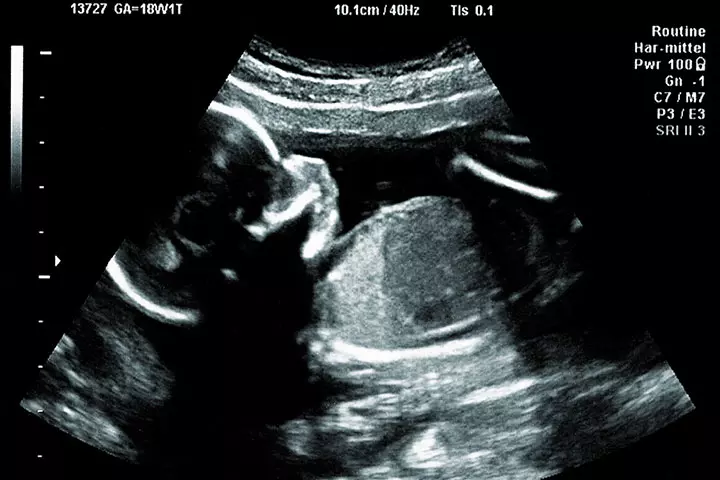
Image: Shutterstock
Ultrasound scan is the most common method used by doctors. Ultrasounds are high-frequency sound waves that produce images of the fetus.
The procedure is usually performed to look at the development of the fetus, where the waves are sent over the stomach through the uterus. The waves then create a picture of the unborn baby, which can be viewed on a monitor. The doctor will be able to know if it is a boy or girl based on the position of the fetus by recognizing the genitals if the scan is done after 18 weeks when the reproductive organs start to appear (1). However, the doctor will not tell you about the sex of your baby, if prenatal sex determination tests are illegal in your country.
2. Amniocentesis and chorionic villus sampling (CVS)
These two maternity tests are performed if your baby is at risk of having genetic or chromosomal abnormalities. As it can detect fetal chromosomes, it can also identify the sex of the baby.
Amniocentesis involves inserting a thin needle into the uterus through your abdomen to withdraw a small sample of fluid and analyze chromosomes. It is performed after the 15th week of pregnancy. CVS involves the extraction of a small tissue sample from the placenta, which can contain the genetic information of your baby. This is usually performed in the 11th week of pregnancy (2).
3. Cell-free DNA test

Image: Shutterstock
This test uses blood samples to detect the sex of the fetus.
The procedure uses small strands of DNA found in the bloodstream of the mother, and the test screens for the presence of male chromosome Y. If they detect the Y chromosome, there is a high chance of having a boy, and if not, it will be a girl. They are performed after 10 weeks of pregnancy and beyond. The accuracy rate is 95% to 99% (3).
Katy, a 15-week would-be mother expecting her third child, discovered her baby’s gender using an NIPT test. Narrating the experience, she says, “I got a phone call from one of my midwives, and she happily updated me that the genetic testing (NIPT) was normal, and we were in the clear. That was great news to hear. She also told me that the gender results were in and asked if I would like to know that information. I asked her to email me the results so I could open them and find out with my husband and kids together. So…..as the four of us sat there, I scrolled down the email, looking for the word “boy” or “girl,” fully expecting to see “girl.” I was shocked when I saw the words: “fetal sex: MALE.” I gasped, and my hand flew over my mouth. We are all excited and surprised for a boy (i).”
 Point to consider
Point to considerSemi-Scientific Ways To Predict The Baby’s Sex
Some methods rely partly on tests and science but may not always be accurate.
4. Ramzi’s Theory Of Abdominal Ultrasound
Developed by Dr. Saam Ramzi Ismail, it is also referred to as the Ramzi sex determination method or Ramzi’s method.
The method uses placental location as a marker for detecting the sex of the fetus. The placental side is known through the ultrasound scan, done at six to fourteen weeks into pregnancy (4). If the placenta is towards the right side, it is said to be a boy, and if it is to the left, it might be a girl.
5. The skull gender test theory

Image: IStock
This theory is based on observing the skull shape of your baby to determine its sex. An ultrasound picture would help the doctor guess the cranial differences.
In general, male skulls are believed to be larger and robust than female skulls (5).
6. The Nub theory
The Nub theory is based on the “angle of the dangle” or the nub. It can be determined in the 12th-week ultrasound picture.
In the first trimester, the fetus will have a genital tubercle, otherwise known as the nub, which develops later into a penis or clitoris. You are likely to carry a boy if the nub points towards the baby’s head. And it might be a girl if the nub remains flat or points down (6).
 Quick fact
Quick factFun Ways To Predict Sex Of A Baby
Next, we list some off-the-wall sex prediction tests that have no basis in facts. They are random methods based on people’s beliefs and misconceptions and have no scientific backing whatsoever.
7. Chinese gender prediction chart

Image: IStock
The Ancient Chinese gender chart is a traditional method that uses the mother’s age at the time of conception and the month of conception to predict the baby’s sex based on the Chinese lunar calendar. According to this chart, you may conceive a girl if both your date of birth and conception month are either odd or even. The chart says you’ll have a boy if one date is even and the other odd (7). Want to give it a try? Use our Chinese gender predictor chart.
8. Wedding ring test
The ring gender test is one of the oldest and most popular sex prediction tests done using the wedding ring and a string. It can be tried at any time, and most people prefer to play during baby shower parties. However, there is no scientific evidence to support this method.
You have to tie the wedding ring to a thread or a piece of hair and hold the swinging ring over the belly when lying down. If the ring moves back and forth, like a pendulum movement, it is said to be a boy. If the ring moves in a circular motion, it’s said to be a girl (8).
9. The baking soda gender test theory

Image: IStock
This is another unscientific gender test theory and an easy DIY experiment based on old wives’ tales.
Mix a cup of clear urine with a couple of tea spoons of baking soda. It is said to be a boy if the mixture bubbles up or fizzes and a girl if it stays calm with no reaction. Truth is, baking soda’s reaction with hCG is believed to create bubbles like the ones you find after opening a soda pop.
 Trivia
TriviaAlthough astrology and other gender prediction methods can be entertaining and enjoyable, they lack scientific evidence to support their accuracy. Instead, there are various beliefs, rituals, and customs that have been passed down through cultures and traditions, often steeped in mythology and folklore, which can be unreliable for determining the gender of a baby.
Frequently Asked Questions
1. What’s the difference between a girl bump and a boy bump?
It is believed that prominent bellies indicate a boy since boys weigh more at birth than girls. There is also a theory that weight spread around the hips or a high, round belly might indicate a girl. In contrast, excess weight in the front or low, outward belly may indicate a male. However, none of these claims are scientifically proven or consistently observed to make them a general thumb rule.
2. What are the chances my baby will be a boy?
The man’s chromosome at the time of conception determines the biological gender of a baby. The male contributes an X or a Y chromosome during conception. Based on the chromosome the male’s sperm contributes, there is a 50-50 chance of the baby being a boy or a girl.
3. Are there any legal implications or ethical concerns of gender prediction in India?
In India, the Prenatal Diagnostic Techniques (Regulation and Prevention of Misuse) Act was passed in 1994 to ban gender determination. In 2003, the Act underwent several upgrades and was renamed the PC-PNDT Act (Preconception and Prenatal Diagnostic Techniques), which prohibits the usage of sex selection technologies and advertisements related to preconception. The Act was again strictly amended in 2011 to further check female feticide (9).
4. How accurate are scientific methods of gender prediction?
An ultrasound scan is said to be 100% accurate by 20 weeks. Furthermore, amniocentesis is believed to have an accuracy rate of 99% accuracy rate, but it is not done most of the time due to its risk of miscarriage (10). Peekaboo, a scientific home test, is believed to be 99.5% accurate in revealing the gender of the baby by the sixth week of pregnancy (11).
5. What are some of the ethical concerns associated with gender prediction?
In many cultures, it is a common belief that boys are superior to girls. Gender prediction enables this belief and gives the parent the choice to choose their baby’s gender. This gender disparity often leads to gender discrimination and violation of human rights (12).
It is an exciting and emotional feeling when you know the sex of the fetus. Relying on scientific gender predictions rather than the other techniques may be more accurate and thus give you a head start to make preparations accordingly for your baby boy or girl. However, before proceeding, do check your country’s guidelines for sex determination since certain countries such as India consider it illegal. If it is legal, go ahead and celebrate your baby’s arrival with a grand gender reveal party if you wish to.
Disclaimer: Sex prediction methods are only for fun and do not replace medical examinations. MomJunction believes in gender equality. We do not support or encourage sex determination nor entertain any queries on finding the sex of the baby.
Infographic: Disadvantages Of Checking Baby’s Gender At Home
Finding out your baby’s gender could be one of the most-awaited moments of your pregnancy journey. However, counting on non-scientific methods for gender detection could carry some drawbacks, as stated in this infographic. Illustration: Momjunction Design Team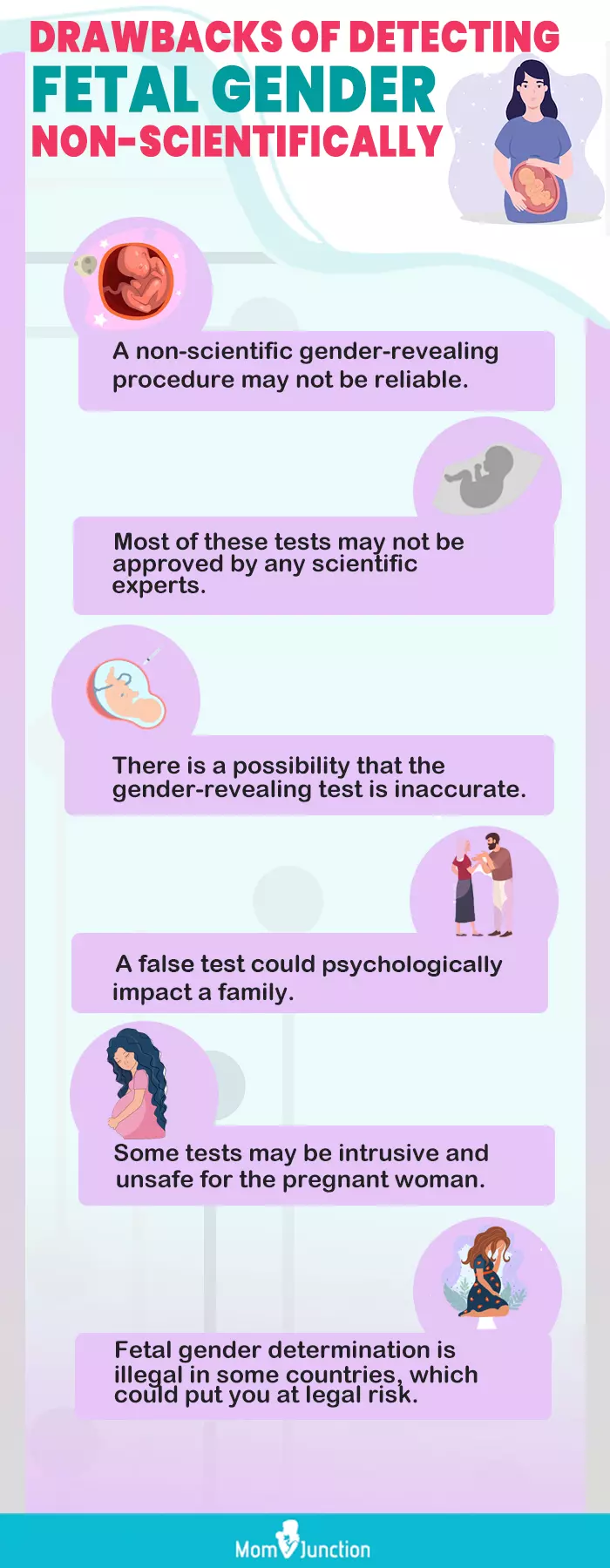
Do you want to find out if medical science can actually predict a baby’s gender? Find out in this video, where we debunk medical myths about baby gender prediction and reveal the facts.
Personal Experience: Source
MomJunction articles include first-hand experiences to provide you with better insights through real-life narratives. Here are the sources of personal accounts referenced in this article.
i. Baby #3 – Pregnancy update – 15 weeks & 16 weeks pregnant (plus gender reveal!); https://babylute2013.wordpress.com/2020/09/21/baby-3-pregnancy-update-15-weeks-16-weeks-pregnant-plus-gender-reveal/References
1. Prenatal Ultrasound; UC San Diego Health
2. Celine Lewis et al.; Non-invasive prenatal diagnosis for fetal sex determination: benefits and disadvantages from the service users’ perspective; Eur J Hum Genet. (2012)
3. Stephanie A. Devaney et al.; Noninvasive Fetal Sex Determination Using Cell-Free Fetal DNA; JAMA (2015)
4. Michael McFadzen et al.; Maternal Intuition of Fetal Gender; J Patient Cent Res Rev. (2017)
5. K. Ramakrishnan et al.; Sex determination in forensic odontology: A review; J Pharm Bioallied Sci. (2015)
6. Patricia Santiago-Munoz; Boy or girl? The difficulties of early gender prediction; The University of Texas Southwestern Medical Center (2016)
7. Villamor E et al.; Accuracy of the Chinese lunar calendar method to predict a baby’s sex: a population-based study; Paediatric and Perinatal Epidemiology. (2010)
8. Wedding Ring Test – Pregnancy Gender Predictor; USC Digital Folklore Archives (2013)
9. Anita Bhaktwani;The PC-PNDT act in a nutshell; NCBI; (2012)
10. Amniocentesis; Cleveland Clinic
11. Gender Prediction Tests: The Latest Science; American Pregnancy Association
12. GENDER DISCRIMINATION CAUSES INEQUALITY; Save The Children
Community Experiences
Join the conversation and become a part of our nurturing community! Share your stories, experiences, and insights to connect with fellow parents.
Read full bio of Dr. Anita Gondy
Read full bio of Rebecca Malachi
Read full bio of Swati Patwal
Read full bio of Dr. Joyani Das














